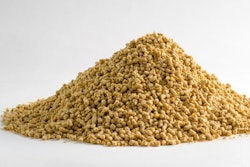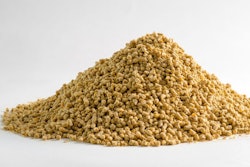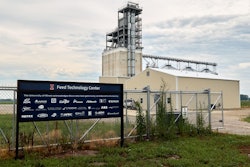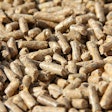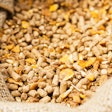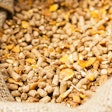
Latest high-tech manufacturing trend prevents pathogens from spreading, remedies labor issues
Imagine technicians being able to control feed manufacturing remotely from an off-site central command center, overseeing automated processes at several feed mills at once.
The feed mill itself would be outfitted with the latest cutting-edge equipment, robotics, cameras and countless sensors, continuously sending data to the central command center.
The mill would be buzzing with productivity, but not human activity. In fact, you wouldn’t even need to flip on a light switch (automatically — from the command center, of course.)
This concept is called lights out manufacturing and utilizes fully automated technology for all aspects of production, requiring little to no human intervention. While it’s far from commonplace, it has been implemented in a few instances around the world — most notably at FANUC, a manufacturer in Japan that makes robots and manufacturing systems at its lights out factory.
Its prevalence in feed manufacturing is likely years away from reality, according to industry experts. Most mills today do not possess the facility automation, data exchange capabilities or maintenance-free equipment required to operate a mill without on-site staff.
Lights out production also has limitations and works best with simple repeatable tasks — not complex ones (like feed mixing, batching and routing) or small production runs that would require reprogramming.
In the next 30 years, however, it is possible that automation technology and feed manufacturing equipment may be ready to rise to the challenge of lights out feed manufacturing.
The case for lights out for biosecurity
The advantages of lights out manufacturing cited across industries include improved worker safety, reduced accidents, optimal operations efficiency, higher productivity and better manufacturing space utilization.
Additionally, it addresses problems feed manufacturers face with staffing shortages and offers biosecurity advantages by reducing pathogen transmission via humans.
Feed mills in the United States are required to have a written biosecurity plan to control the potential spread of animal diseases through feed and feed ingredients.
A main component of this plan involves identifying potential hazards and risks throughout the manufacturing process. According to Guidance for Developing Biosecurity Practices for Feed and Ingredient Manufacturing, humans — employees, visitors, drivers and customers — are all potential pathogen spreaders by way of soiled clothing, dirty footwear or on their person.
“Foot traffic from the receiving area represents a potential for bringing pathogens into the feed manufacturing plant,” the guidance states. “The goal is to develop procedures that prevent the pathogens from entering the manufacturing area, such as restricting personnel movement from the receiving area into the manufacturing area.”
While acceptable controls for moving between areas include foot baths, dedicated footwear, “Danish entry,” and handwashing stations, restricting most people’s access to the feed mill is an important biosecurity measure.
“We’re starting to see feed companies have their truck drivers stay in their truck,” says Loren Field, P.E., executive vice president of Younglove Construction LLC. “A truck driver drives trucks — they do not load feed trucks. Since the truck is also a carrier of [pathogens, we recommend] either washing down in-truck very often or the type of heat sterilization that is commonly used inside flour mills.”
With lights out, automated receiving would eliminate or greatly reduce feed mill foot traffic from truck drivers.
Human error in following sanitation protocols for the prevention of pathogenic spread could also be avoided with lights out manufacturing. Today, following protocols requires employee training and relies on the employee’s commitment to biosecurity and proficiency in completing the task.
As technology costs drop over time, advanced sensors, high-quality cameras, automatic washers and high-temperature sterilizers may provide effective solutions for reducing the potential for human error in sanitation practices.
Notable achievers of nearly lights out manufacturing
Examples of semi-lights out operations in feed and grain processing are cropping up across the supply chain.
For example, a CHS grain elevator in Herman, Minnesota, is on its way to implementing a first-of-its-kind lights out automated receiving system. Still in the pilot phase, once fully operational, the system will incorporate artificial intelligence and advanced sensing capabilities to “teach” a truck probe how to sample incoming grain without anyone manning the controls.
“The way it’s designed to work is the truck would have a small puck installed just behind the front of the trailer,” Jerry Kramer, CHS general manager, says. “The very first time a semi-trailer goes through the system, we position the truck to essentially teach the probe where it can probe, where it won’t hit any of the bows or straps on the truck. It also learns how deep it can probe, so it doesn’t hit the bottom of the truck.”
Kramer says the puck would capture those characteristics, so whenever the puck reader detects that puck at receiving again, the probe will know how to probe that truck.
From there, the sample is automatically run through grain grading equipment, checked for foreign material, moisture and test weight. Once graded, the system automatically logs the grade, produces a ticket and instructs the driver to proceed to one of two receiving pits.
Puck readers throughout the receiving system provide checks and balances, so if a driver attempts to approach the wrong dump pit, the mill’s staff is alerted to reroute the pit to the intended storage bin.
“Even in that scenario, it is no problem,” Kramer says. “Within a minute we’re going to clear out the system because we know that it’s hauling No. 2 yellow corn, for example, and the driver should have pulled onto pit No. 1. We would clear out the system and change the bin destination, allowing the driver to proceed to dump at pit No. 2.”
All this can be done simply with the click of a mouse.
Meanwhile, Aviagen Group, a global broiler breeder based in Huntsville, Alabama, has developed four state-of-the-art feed processing facilities in Tennessee, Oklahoma and Georgia, that each have centralized biosecure control rooms.
Buildings at the feed mills are strategically spread out, and the movement of people and product is carefully controlled.
Fencing around and through the grounds reduces access and regulates traffic flow. The location is enhanced with closed circuit cameras for monitoring traffic and activity on-site.
Personnel with access to the control room must follow strict hygiene practices, and shower and change clothes before entering.
Every aspect of production is closely monitored with little possibility of human disturbance. Feed ingredients are unloaded from the delivery truck through an enclosed chute to prevent pathogen-carrying dust from escaping into the mill before going into a grinding machine, and finished feed awaits in sealed bins for shipment.
Quantum leap from today
While lights out manufacturing principles may add value from a biosecurity standpoint, certain functions of a feed mill are far from hands-off, like equipment maintenance.
Lights out manufacturing “is a quantum leap from the way mills are being built and operated today,” says Field. “Wherever there’s a mechanical piece of equipment, there’s going to be a broken piece of mechanical equipment at some point in time and human hands are going to have to touch that.”
Equipment manufacturers like CPM are working to address that challenge by engineering new technologies to prevent pellet mill slips and plug, however, the improvements don’t attempt to equate to maintenance-free ownership.
“I think we’re a long way away from the point where pellet mills can be truly hands off,” says Scott Anderson, general sales manager, CPM. “It interacts with the whole artificial intelligence piece, which is a challenge that equipment manufacturers need to take up to improve our capability for predictive maintenance before they get to the breakdown.”
Pete Ensch, CEO of feed mill automation system provider WEM Automation, concurs.
“I think it’s going to push people to that next level of preventive maintenance,” Ensch says. “If you want to run a facility lights out, you can’t have electrical and mechanical outages, so that that will be a challenge.”
Broadband availability across rural America is another hindrance to the scalability of lights out feed manufacturing.
“We talked with several producers during COVID when everyone was going home and working remotely and had discussions on setting up central control centers for multiple feed mills,” says Ensch. “There were challenges with that — internet connectivity throughout the country and having the speed to manage the control piece, but those discussions are happening.”
For some early adopters, the move toward lights out has already begun. Their trailblazing and proven biosecurity records from minimizing human interaction with feed may encourage future investment in making the lights out feed mill vision a reality.
Announcing the Feed Mill of the Future digital supplement
WATT’s feed brands Feed Strategy and Feed & Grain magazines join forces to launch the monthly Feed Mill of the Future digital supplement. Each edition aims to provide animal feed industry stakeholders with forward-looking content, market insights and a spotlight on the leading-edge technologies shaping the global feed industry of tomorrow.
Subscribe today! https://bit.ly/3dWzow7



